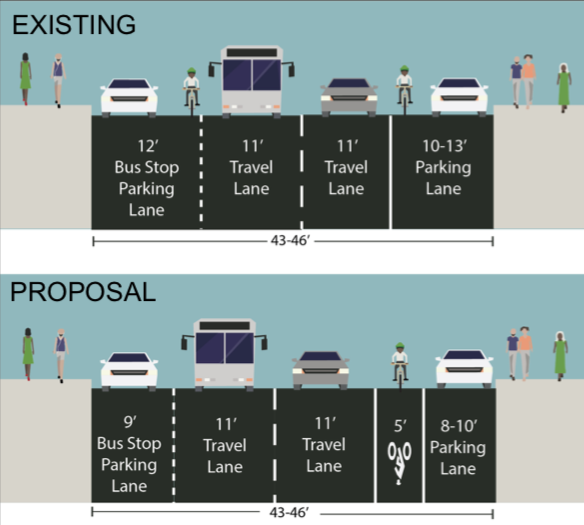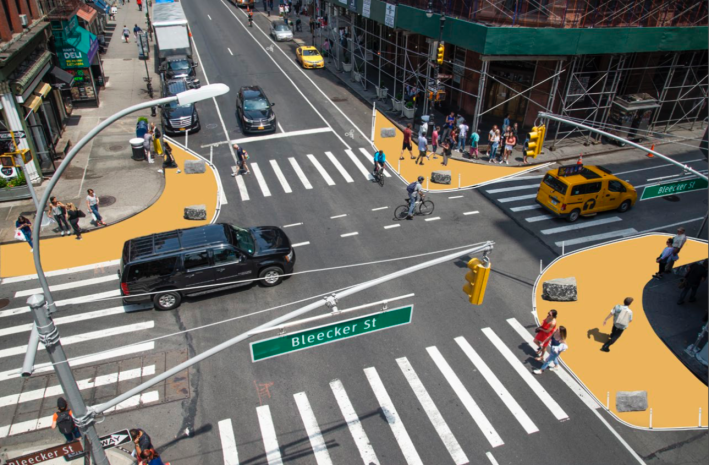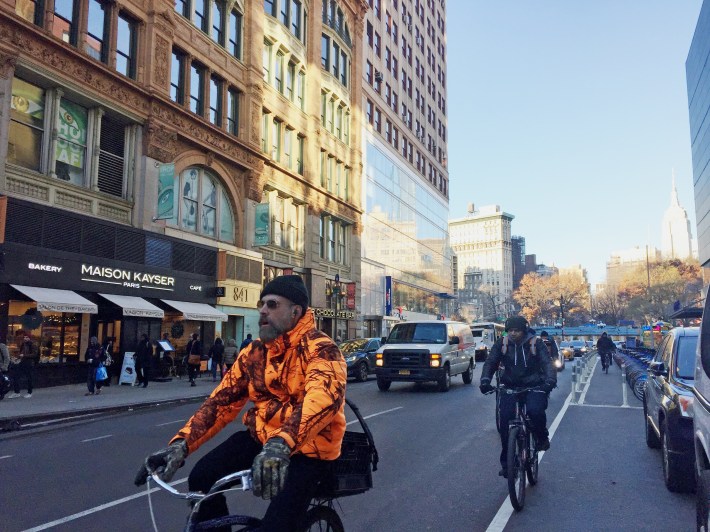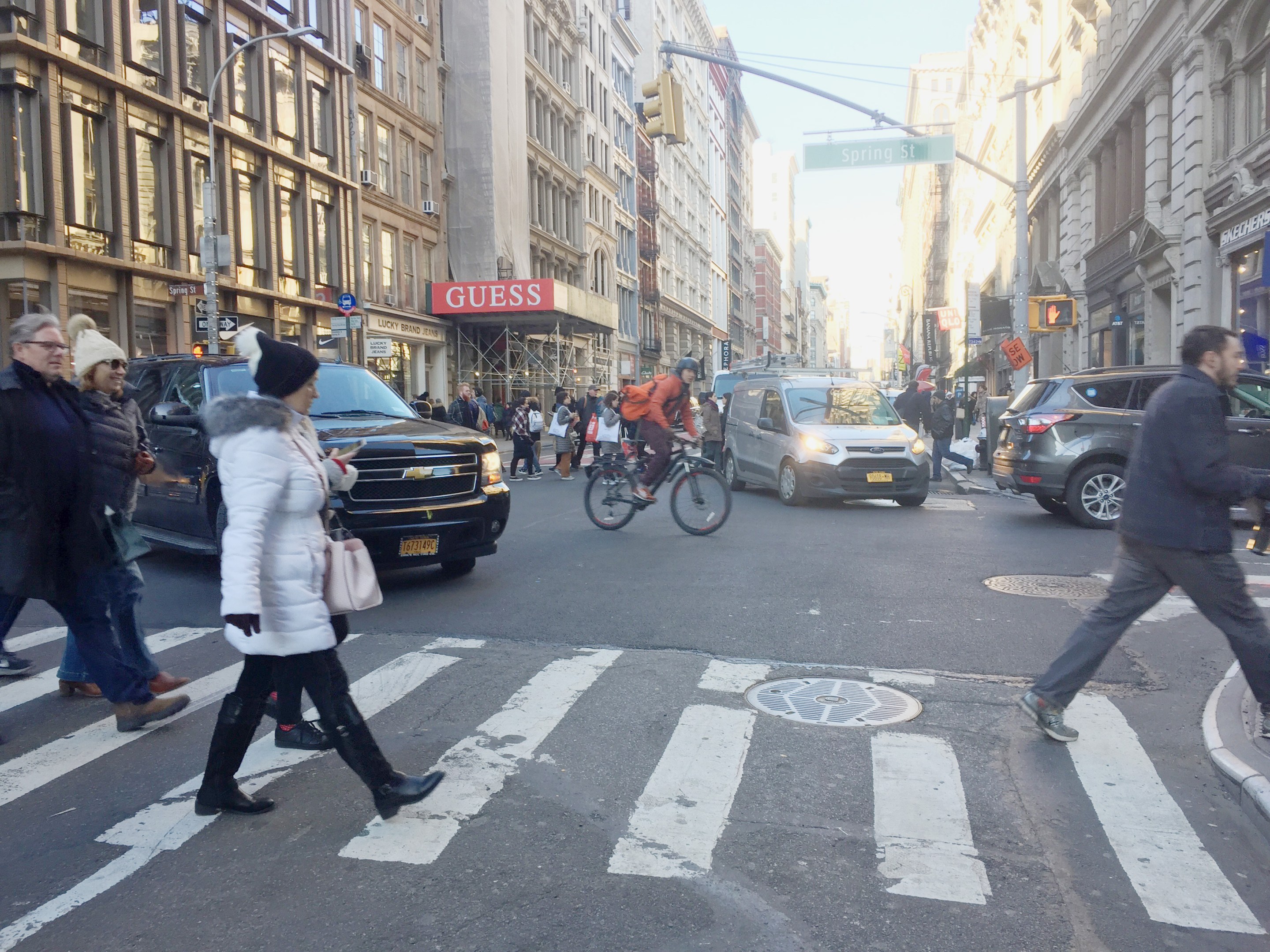Downtown residents want big changes to Broadway, but the city is offering only a "step towards the right direction."
That half-a-loaf language is how a Department of Transportation official described the agency's plan to improve the Village and NoHo sections of Broadway by adding more room for pedestrians and painting a bike lane between 14th and Bleecker streets.
But it's not enough for Manhattan Community Board 2's Traffic and Transportation Committee. A painted bike lane is less safe than a protected one, members pointed out, and the plan does nothing to reduce traffic volume or parking space on Broadway.
On one thing, everyone agrees: Changes are long overdue on Broadway between 14th and Canal streets, where 77 people have been injured so far this year. Sidewalks along the corridor are full of pedestrians, especially just above Houston and well into SoHo’s busy retail district.
Pedestrians are particularly at risk because drivers are so prioritized that two-legged roadway users spill into the roadway at many intersections, especially near the R-train stations on the corridor. Prince Street station averages about 13,600 riders per day while the Eighth Street-NYU station averages more than 15,200, enough to place both stations among the 25 percent busiest stations in the system.
“[The pedestrians] are already out there, they’re already standing in the roadway,” said the DOT's Assistant Director of Project Management Julio Palleiro.

To address that immediate safety issue, DOT will add pedestrian curb extensions on 25 corners from Ninth to Howard streets. The areas will be designated with tan paint extending out to the edge of the parking lane. Plastic bollards will make the areas visible to motorists, and granite blocks will provide physical safety for pedestrians waiting to cross.
Transportation officials say crosswalks will also be given a larger profile, extending to the edges of the new pedestrian areas.
“The curb extensions really help pedestrians shorten the crossing distance, they don’t have to cross the street as long, it gets them out so they’re more visible to drivers,” Department of Transportation Project Manager Mia Moffett explained.
Broadway currently features a protected bike lane from Central Park to Union Square (minus the pedestrianized Times Square). At Union Square, cyclists lose their protection — and many continue riding down Broadway below 14th Street even though it has no bike lane at all. Fifteen cyclists have been injured this year on Broadway between 14th and Spring streets.

Committee members thought the city needed to try harder to create its proven safety enhancement — a protected bike lane — even at the cost of roadway capacity or altering the current curb regulations, which allow three-hour commercial vehicle parking on both sides of the road.
“Is it really appropriate to have parking on both sides in that area?” asked Ritu Chattree, vice-chairwoman of the committee, referring to the section of Broadway between 14th and Bleecker streets.
For now, at least, the plan will merely narrow the parking lanes on both sides of Broadway to create a five-foot-wide painted bike lane, terminating at Bleecker Street. The city will not make any changes to the roadway south of Bleecker Street, which will retain three lanes for motor vehicles and not feature a bike lane.
“We’re making a step toward the right direction.” said Moffett.

The city also lacked a plan for the intersection at 14th Street. Currently, the protected bike lane on Union Square East abruptly ends at 15th Street with sharrows directing southbound cyclists into both the right and left turn lanes. The CB2 committee said the city needs a plan for the complicated intersection that will safely direct cyclists from the protected bike lane on the right side, switch them across the multiple travel lanes to the left side of the street, move them across 14th Street, and connect them with the proposed bike lane on the left side of Broadway.
“It’s a very dangerous condition because you go from a protected bike lane and then it’s not clear what you’re supposed to do next," said committee member Janet Liff.







